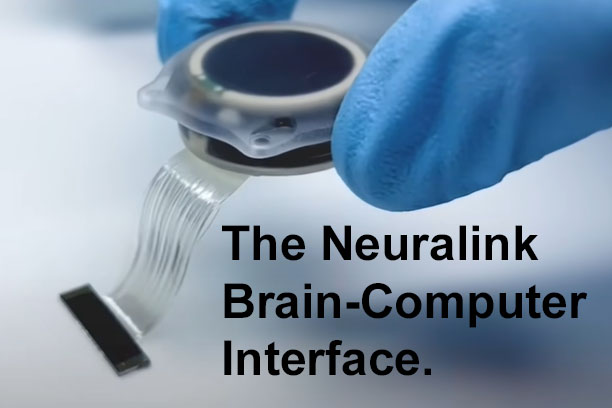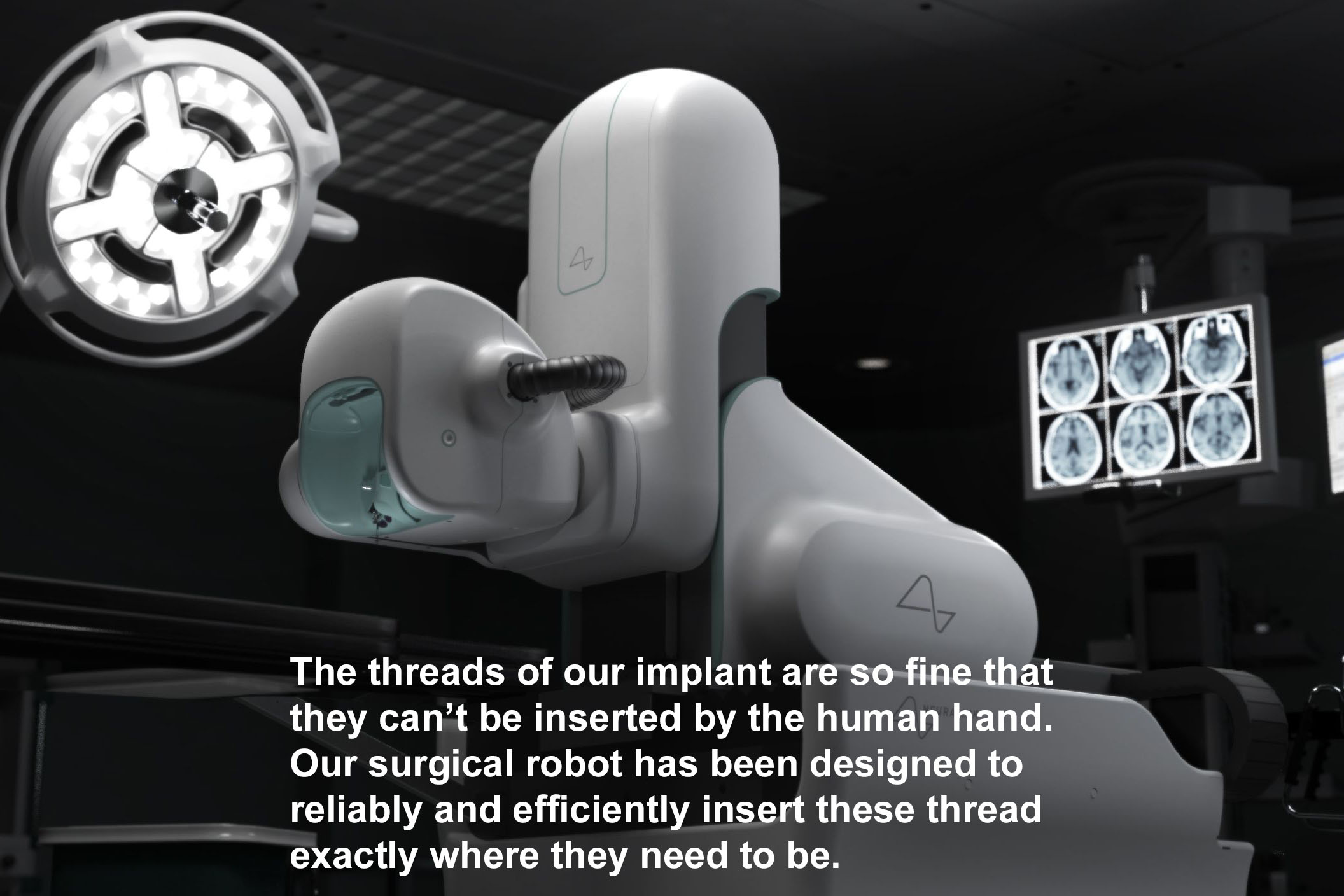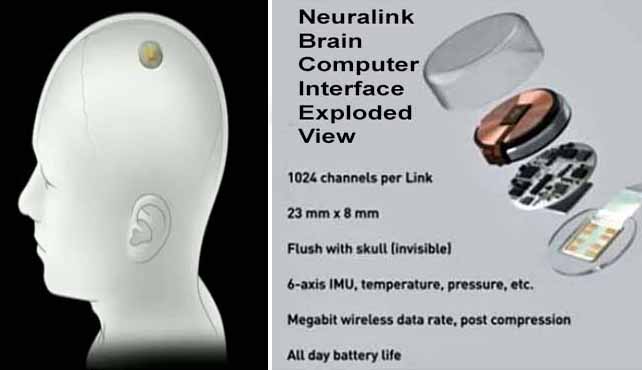

Elon Musk’s Neuralink Brain Implant
Receives FDA Approval for Human Trials
January - February 2024

On May 25, 2023 Elon Musk’s Neuralink medical implant received FDA approval to start human trials. In 2020 I introduced you to Neuralink when the company was doing animal studies and also working to hire bioengineers. Human trial approval is a major step forward and the company's current focus is to use their technology to enable people, paralyzed from the neck down, to operate computers, smartphones and eventually other computer-controlled devices through wireless mind control.
When this column went to press Neuralink was locking down a hospital where the surgeries would be performed and also planning their first clinical trial. They were also developing a registry where people could apply for the study and complete the necessary documentation to help them determine their medical eligibility.
So, what is Neuralink? See photo 1. Neuralink is an extremely small, battery powered, Brain-Computer Interface. The surgery to install it and its thinner than human hair leads is performed by the company's surgical robot. See photo 2. The nano sized leads from the Neuralink device are attached to multiple neural clusters inside the test subject's brain. The Neuralink robot is actually designed to perform the total insertion operation automatically after the medical team sets up the patient for the surgery.
In animal studies Neuralink was perfectly capable of mapping out the physical positioning of every joint of a pig as it moved around its environment. They could then use these recorded electrical signals to control the walking of a paralyzed pig. Monkeys using "mind control" were able to play video games to earn food rewards. Over the last four years their animal studies, to prove proof of concept, included many different animal species causing some groups to complain about mistreatment of animals.
Phase one of human trials is all about proving that the implant and surgical robot are safe and the test subjects brain signals can be properly interpreted to control a computer. The goal is mind control of all kinds of computer controlled external devices to allow quadriplegics physical control over parts of their body that were lost through disease or a physical accident.
After the surgery the computer brain interface will use a self-learning artificial intelligence algorithm to determine which electrical signals control the mental planning of the physical movements of the subject's body parts. Total success, possibly years down the road, could make it possible for a paraplegic using multiple medical implants to transfer what they are thinking to the muscles in their body and gain back many of the functions that their illness or accident has stolen from them. This Neuralink video can further your understanding of this new technology https://www.youtube.com/watch?v=z7o39CzHgug. If you know someone who might meet eligibility and would like to sign up for this or future Neuralink trials they can start the application process at https://neuralink.com/patient-registry/screener.
Taking it a Step Further
Since the surgery is performed by a robot do you think in time this technology will be performed cheaply enough so anyone who needs it can afford it? Why?
What difficulty do you see the AI will have determining which electrical signal controls which body part since the patient's body parts are paralyzed?
Self-learning Artificial Intelligence programs often use game play to determine how to play a game. How might this approach be used to determine which electrical signals control which body parts?


